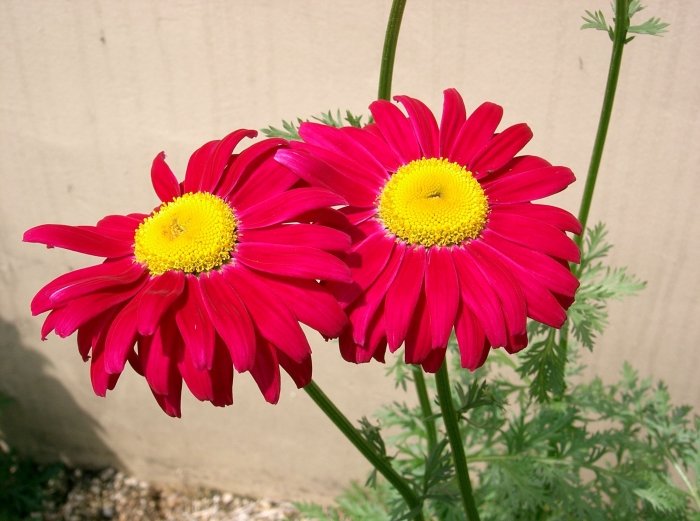Painted Daisy
(Tanacetum coccineum)
Painted Daisy (Tanacetum coccineum)
/
/

KENPEI
CC BY-SA 3.0
Image By:
KENPEI
Recorded By:
Copyright:
CC BY-SA 3.0
Copyright Notice:
Photo by: KENPEI | License Type: CC BY-SA 3.0 | License URL: http://creativecommons.org/licenses/by-sa/3.0/ | Uploader: KENPEI | Publisher: Wikimedia Commons | Title: Tanacetum_coccineum2.jpg | Notes: User created page with UploadWizard |



























Estimated Native Range
Summary
Tanacetum coccineum, commonly known as Painted Daisy, is a deciduous perennial herb native to the Caucasus region, particularly found in open woodlands and meadows. It typically grows to heights ranging from a few centimeters to 1.5 meters (4 ft 11 in) and varies in form with branching stems that may grow erect or prostrate, usually emanating from rhizomes. The plant’s foliage can be hairy to hairless and is often aromatic. Painted Daisy is notable for its composite flowers, which appear in loose or dense clusters. While some species feature ray florets in shades of yellow, or white with yellowish bases, Tanacetum coccineum specifically boasts showy flowers with a range of colors including yellow, pink, purple, red, and white, blooming in the summer season.
The Painted Daisy is valued for its vibrant, multicolored flowers that add a splash of color to garden borders, flower beds, and as cut flowers for indoor arrangements. It thrives in full sun to part shade and requires moderate watering, adapting well to a variety of soil types with different drainage rates. While it is generally easy to maintain, it can be susceptible to fungal diseases such as powdery mildew if not properly cared for. Gardeners often use it to attract beneficial insects like butterflies and bees, which are drawn to its flowers.CC BY-SA 4.0
The Painted Daisy is valued for its vibrant, multicolored flowers that add a splash of color to garden borders, flower beds, and as cut flowers for indoor arrangements. It thrives in full sun to part shade and requires moderate watering, adapting well to a variety of soil types with different drainage rates. While it is generally easy to maintain, it can be susceptible to fungal diseases such as powdery mildew if not properly cared for. Gardeners often use it to attract beneficial insects like butterflies and bees, which are drawn to its flowers.CC BY-SA 4.0
Plant Description
- Plant Type: Herb
- Height: 2-3 feet
- Width: 1-1.5 feet
- Growth Rate: Moderate
- Flower Color: Yellow, Pink, Purple, Red, White
- Flowering Season: Summer
- Leaf Retention: Deciduous
Growth Requirements
- Sun: Full Sun, Part Shade
- Water: Medium
- Drainage: Slow, Medium, Fast
Common Uses
Bee Garden, Bird Garden, Border Plant, Butterfly Garden, Deer Resistant, Drought Tolerant, Groundcover, Hummingbird Garden, Low Maintenance, Potted Plant, Rabbit Resistant, Rock Garden, Showy Flowers
Natural Habitat
native to the Caucasus region, particularly found in open woodlands and meadows
Other Names
Common Names: Pyrethum Daisy, Persian Daisy, Persian Insect-Flower, Garden Pyrethrum, Painted Daisy, Pyrethrum, Bunte Margerite, Bunte Wucherblume, Tanaisie Rose, Pyrèthre Rose Vivace
Scientific Names: , Tanacetum coccineum, Pyrethrum roseum, Tanacetum roseum, Pyrethrum coccineum, Pyrethrum roseum var. roseum,
GBIF Accepted Name: Tanacetum coccineum (Willd.) Grierson